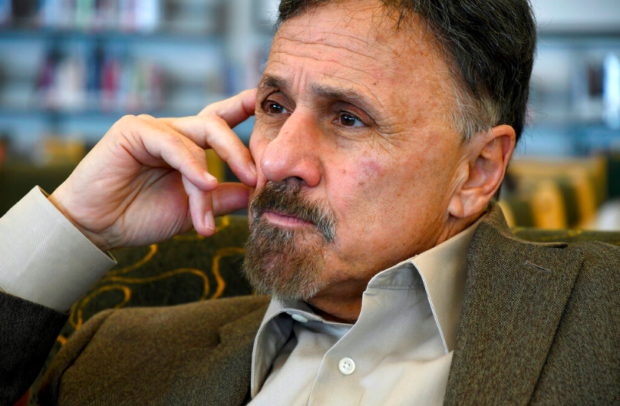
In this March 23, 2019 file photo, former Columbine principal Frank DeAngelis reflects about the upcoming 20th anniversary of the mass shooting at the suburban Denver high school. AP
COLUMBUS, Ohio — In the days after a teenager shot and killed three fellow students at Ohio’s Chardon High School in 2012, then-Principal Andy Fetchik remembers getting a call from someone who knew just what he was experiencing.
It was Frank DeAngelis, the principal of Columbine High School in Littleton, Colorado, during the deadly 1999 shooting. DeAngelis told him: It’s going to be OK. You’ll get through this. If you have questions, feel free to call me.
Fetchik called, and he found DeAngelis to be a comfort and a resource as Chardon began its recovery. Now both men are part of a new network of current and former principals who hope to offer support to other school leaders in the aftermath of violence.
“This is the network each of us wishes we had when the shooting occurred in our school,” DeAngelis said in a written statement.
The Principals Recovery Network will also advocate for educational resources and policies to help schools prevent violence. It convened this month ahead of the 20th anniversary of the Columbine shooting.
The group, organized by the National Association of Secondary School Principals, includes 17 current and former principals from schools in 11 states, including Marjory Stoneman Douglas High School in Parkland, Florida, the site of a shooting in 2018. Collectively, the participants have lost more than 40 students and staff and seen scores more wounded in shootings over the past two decades.
“We’re not experts in recovery, but we’re experts in the fact that we lived through it,” Fetchik said, “and I think that it will provide a resource that kind of confirms to the school leader that there’s others out there and they’re not alone.”
Some members said they already reach out to offer support if a shooting occurs, but the network gives their outreach some structure and a centralized contact.
“What better group of people to do it than the folks who have experienced it?” said Michael Bennett, a former principal who was shot in the leg by a student in 2004 when he was a teacher at Columbia High School in East Greenbush, New York.
Bennett said it would have been helpful back then to hear from a voice of experience about how the situation might impact him long term and how colleagues might have varying emotional responses.
Principal Warman Hall, of New Mexico’s Aztec High School, eventually connected with DeAngelis after two students died in a 2017 shooting on the school’s campus. But Hall said he, too, felt a sense of isolation and could have used someone with prior experience as a sounding board while initially sorting out a recovery plan.
Schools typically have protocols for the immediate response, he said, but it can be much more complicated to figure out what follows — how to restore a focus on learning, address mental health needs for both students and employees, and navigate anniversaries and commemorations, for example.
“You’ve got to deal with all the issues of recovery, and that starts happening just as soon as you try to re-establish contact and get the kids back on campus and get the teachers back on campus,” he said. “There’s no template for that.” /ee

